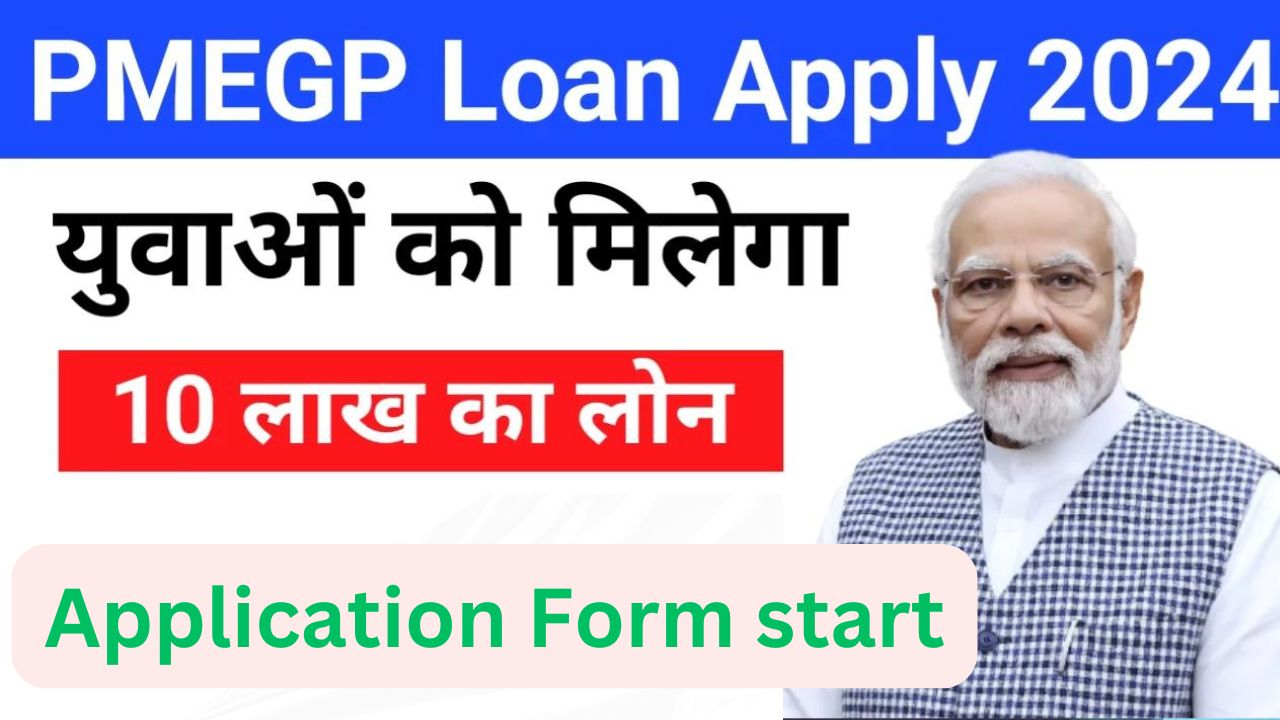PMEGP Loan :The Pradhan Mantri Employment Generation Programme (PMEGP) is one in a list of schemes which the Indian Government has launched with an aim to control unemployment and create an environment where micro, small and medium-sized enterprises (MSMEs) can flourish. It is meant to give financial assistance for starting businesses so that entrepreneurs as well as young people may become self-sufficient and contribute to national development. This article will discuss all aspects about PMEGP scheme including its key features, eligibility criteria, application process and advantages.
Introduction To Pmegp Scheme
The Pradhan Mantri Employment Generation Programme (PMEGP) which is supported by the Government of India is a scheme that provides for credit linked subsidy. The primary aim of this scheme is to offer loans to new units of business and give amount as subsidy of part of the cost incurred in executing projects. This scheme is mainly for those individuals who have passion for establishing their own companies but do not have sufficient funds.
Benefits of the PMEGP Scheme
The Prime Minister’s Employment Generation Programme (PMEGP) offers several advantages to entrepreneurs and small businesses:
- Financial Support: Provides loans up to ₹10 lakh for small enterprises, with additional subsidies.
- Subsidies:Offers up to 35% subsidy in rural areas and 25% in urban areas, reducing the financial burden.
- Employment Creation: Encourages new businesses, which in turn creates job opportunities and supports local economic development.
- Government Backing: Offers a government-backed scheme with minimal formalities, facilitating easier
- access to funding.
- Training and Development: Provides training under the Entrepreneurial Development Program (EDP), enhancing skills and business knowledge.
Eligibility Criteria for PMEGP
- Age: Applicants must be at least 18 years old.
- Educational Qualification: A minimum of 8th-grade education is required for projects costing more than ₹10 lakh in the manufacturing sector and ₹5 lakh in the service sector.
- Eligible Applicants: Individual entrepreneurs, Self-Help Groups (SHGs), Institutions registered under the Societies Registration Act, 1860, Production Co-operative Societies, and Charitable Trusts can apply.

- New Enterprises Only: The scheme supports only new ventures; existing units or those benefiting from other government schemes are not eligible.
Financial Background: There is no income ceiling, making it accessible to individuals from different financial backgrounds.
Online Application Process for PMEGP
Online Application Process for PMEGPThe Pradhan Mantri Employment Generation Programme (PMEGP) offers financial assistance to aspiring entrepreneurs and small business owners in India. To apply for the scheme online, follow these steps:
Visit the Official Website: Start by visiting the official website of the Khadi and Village Industries Commission (KVIC), which is the nodal agency for implementing PMEGP.
Register: On the website, navigate to the “Online Application” section and select the “PMEGP” option. You’ll need to register by providing basic details such as your name, contact information, and email address. Once registered, you will receive a User ID and password.

Fill in the Application Form: Log in using the credentials provided and complete the application form. The form will require you to provide detailed information about your business idea, personal background, educational qualifications, and financial status.
Upload Necessary Documents: Attach the required documents, including your Aadhaar card, PAN card, proof of residence, educational certificates, and a detailed project report. Ensure that all documents are clear and legible
Submit the Application: After filling in all the details and uploading the documents, review your application carefully. Once satisfied, submit the form by clicking the “Submit” button.
Verification and Loan Disbursement: After submission, your application will undergo a verification process. Upon successful verification, the loan amount will be disbursed to your bank account.
Documents Required Under Pmegp Scheme
ainings or courses. It validates your proficiency in entrepreneurship skills.
Project Report: This is a document that outlines the business plan of the applicant. The report should include the following:
Executive Summary: This is the most important part of the project report. It summarizes all other sections and pages to give a clear picture of the entire project.
Business Concept: A discussion on the opportunity that leads to the creation of an enterprise. This section makes it easy for anyone reading it to understand why your business exists.
Operational Plan: Outlines how you intend to get things done. This section focuses on production, distribution, marketing and sales among others.

Effective Marketing Strategy: This covers all aspects of advertising your product or service including market segmentation, pricing strategies and distribution methods.
Financial Projection: Includes estimated income, expenditures and profits over a certain period of time usually 3-5 years.
Conclusion: This is the last part of your project report where you gently bring together all findings from previous sections into one concise paragraph. It should leave readers satisfied with what they have just read.
The above documents must be submitted during strength assessment stage.
In addition to these, any other relevant documents would also assist in boosting up the chances for getting grouped up under EDPs or EDP funding opportunities. These may include tax returns, NIC registration details, references from banks etc.
Amount Of Subsidy And Loan
Under the PMEGP scheme, the loan amount can range from Rs 2 lakh to Rs 10 lakh. In rural areas, a subsidy of 35% is provided for the general category and 35% for special category (SC/ST/OBC/Women). In urban areas, a subsidy of 25% is provided for the general category and 25% for special category. This subsidy reduces the total cost of your loan and reduces your financial burden, making it easier to start a business.
webaite link :For official information about the PMEGP loan scheme, you can visit the official PMEGP portal provided by the Khadi and Village Industries Commission (KVIC). Here’s the link to the official PMEGP website:
FAQ
What is PMEGP?
PMEGP stands for Pradhan Mantri Employment Generation Programme. It is a credit-linked subsidy scheme launched by the Government of India to generate employment opportunities by providing financial assistance to individuals for starting their own businesses
Who is eligible for PMEGP?
Any Indian citizen above 18 years of age with at least an 8th-grade education is eligible. Special categories like SC/ST/OBC, women, and physically handicapped individuals are also eligible with additional benefits.
What is the maximum loan amount under PMEGP?
The maximum loan amount is ₹25 lakh for manufacturing units and ₹10 lakh for service units.
What is the subsidy rate under PMEGP?
For rural areas, the subsidy is 25% for general categories and 35% for special categories. In urban areas, it is 15% for general categories and 25% for special categories.
How to apply for PMEGP
You can apply online through the official PMEGP website by filling out the application form and uploading the necessary documents.
What documents are required for the PMEGP loan application?
Documents such as Aadhaar card, PAN card, caste certificate (if applicable), bank passbook, educational certificates, project report, and EDP training certificate are required.
Can existing businesses apply for PMEGP?
No, PMEGP is only available for new ventures. Existing units that have availed of benefits under any other government scheme are not eligible.
Is there any training provided under PMEGP?
Yes, beneficiaries must undergo Entrepreneurship Development Program (EDP) training to ensure the successful management of their business.
How long does it take to get the PMEGP loan?
The loan process may take a few weeks to months depending on the verification process and documentation
Can I get a loan without collateral under PMEGP?
Yes, loans up to ₹10 lakh are usually provided without collateral under the CGTMSE scheme.
Braj Verma is a resident of Rajgarh in Madhya Pradesh and is a content writer and freelancer by profession. He has a degree in Political Science from Barkatullah University, Bhopal. He has expertise in subjects like credit cards, banking, loan, insurance, political analysis and digital marketing.

